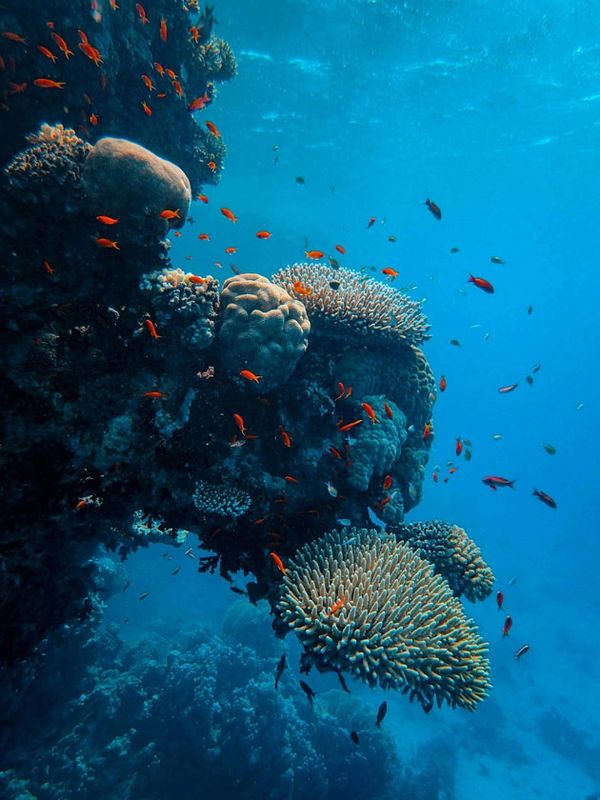The Ocean's Future is in Our Hands
The Problems Caused by Plastic Waste

The fundamental problem with non-biodegradable plastic is its persistence: almost every piece ever produced still exists, causing a cascade of escalating issues for the future. Plastic can last for hundreds to thousands of years and for many types it doesn't truly "disappear" but rather breaks down into smaller and smaller pieces known as microplastics.

Physical Harm to Marine Life (Ingestion & Entanglement)
Ingestion: Marine animals, from microscopic plankton to the largest whales, routinely mistake plastic debris for food. This leads to:
- Internal Blockages: Plastic can obstruct digestive tracts, causing starvation as animals cannot digest real food.
- Internal Injuries: Sharp plastic fragments can perforate stomachs and intestines, leading to internal bleeding, infection, and death.
- False Satiation: Animals may feel full due to plastic in their stomach, leading to malnutrition.
- Chemical Leaching: Ingested plastics can release toxic chemicals (like PCBs, phthalates, BPA) directly into the animal's body, causing immune suppression, reproductive issues, endocrine disruption, and organ damage. This is particularly concerning for filter feeders (like blue whales) and apex predators (like great white and hammerhead sharks, and otters) who accumulate high concentrations of plastics and their associated chemicals through biomagnification up the food chain.
Entanglement: Animals become trapped in larger plastic debris, especially "ghost fishing gear" (abandoned nets, lines, traps). This results in:
- Drowning: Air-breathing animals (turtles, marine mammals, seabirds) are unable to surface for air.
- Physical Injury: Severe cuts, abrasions, and deep wounds leading to infection, necrosis, and even limb loss.
- Impaired Mobility: Difficulty swimming, hunting, migrating, or escaping predators, leading to starvation and exhaustion.

Habitat Destruction and Degradation
- Coral Reef Smothering: Plastic debris can settle on and smother fragile coral reefs, blocking sunlight and causing physical damage, leading to coral bleaching and death.
- Seabed Alteration: Plastics accumulate on the seabed, altering benthic (bottom) habitats and disrupting ecosystems.
- Mangrove & Coastal Ecosystem Damage: Plastics accumulate in vital coastal nurseries like mangroves and saltmarshes, hindering growth, reducing biodiversity, and impacting ecosystem services.
- Transportation of Invasive Species: Floating plastic debris can act as rafts, transporting invasive species to new environments, disrupting local ecosystems.

Chemical Pollution and Ecosystem-wide Impacts
- Sinks for Toxins: Plastics act as "sponges," absorbing persistent organic pollutants (POPs) and other hazardous chemicals from the surrounding seawater.
- Bioaccumulation: As plastics break down into microplastics and nanoplastics, they are ingested by organisms throughout the food web. These associated chemicals then bioaccumulate in individual animals and biomagnify up the food chain, leading to higher concentrations in top predators like sharks, whales, and otters.
- Disruption of Ecosystem Services: The overall health of marine ecosystems is compromised, impacting everything from oxygen production (by phytoplankton) to food security for human populations that rely on seafood.

Economic and Social Impacts
- Fisheries: Damage to fishing gear, reduced fish stocks, and contaminated seafood.
- Tourism: Littered beaches and polluted waters deter tourism.
- Human Health: Potential for microplastics and associated toxins to enter the human food chain through seafood, though the full long-term effects on human health are still being researched.

Today's Problem is Tomorrow's Problem
The fundamental problem with non-biodegradable plastic is its persistence: almost every piece ever produced still exists, causing a cascade of escalating issues for the future. Without natural breakdown, plastic will continue to accumulate in terrestrial, freshwater, and marine environments. Landfills will overflow, natural landscapes will be blighted and the ocean will become increasingly saturated with debris, forming ever-larger garbage patches and contaminating the seafloor. Non-biodegradable plastic merely fragments into smaller and smaller pieces (microplastics and nanoplastics) rather than disappearing. These tiny particles will continue to proliferate, becoming omnipresent in water, air, soil and ultimately within the food chains of virtually all living organisms, including humans. This creates a legacy of widespread, persistent pollution. Non-biodegradable plastics continually leach toxic chemicals and act as sponges for other pollutants. Future generations of wildlife will face increasingly higher body burdens of these harmful substances, leading to widespread reproductive failures, immune system suppression, endocrine disruption and developmental abnormalities, potentially compromising entire ecosystems. As microplastics and nanoplastics become ubiquitous in our environment (water, air, food), their long-term effects on human health are a major unknown. Future generations face potential risks from chronic exposure to these particles and their associated chemicals, with concerns including inflammation, genotoxicity, gut microbiome disruption and impacts on various organ systems.
Copyright © 2025 The Clearwater Horizons Project - All Rights Reserved.